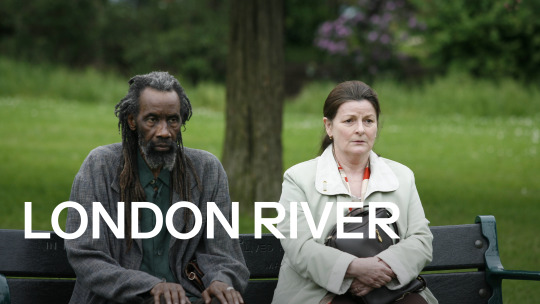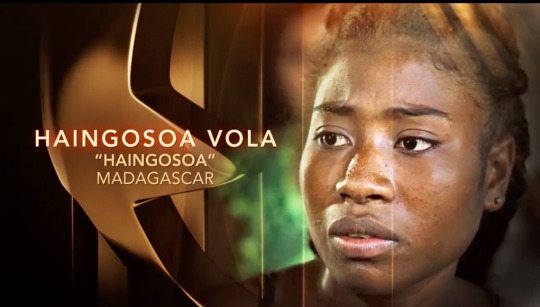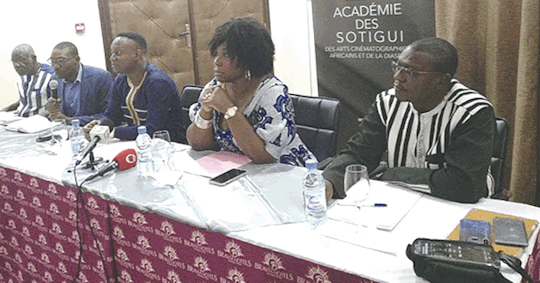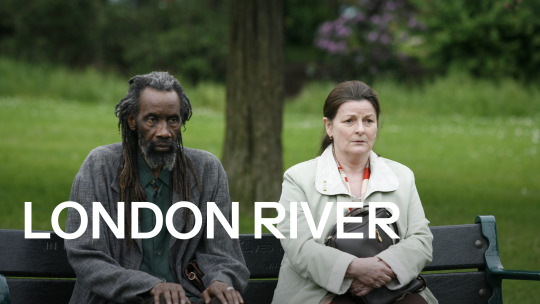#SOTIGUI
Explore tagged Tumblr posts
Text





L'annulaire (The Ring Finger, 2005) Directed by Diane Bertrand Cinematography by Alain Duplantier
#L'annulaire#The Ring Finger#Diane Bertrand#Alain Duplantier#Olga Kurylenko#Marc Barbé#Sotigui Kouyaté#Doria Achour#Louis Dewynter#Beth Gibbons#cinematography#drama#romantic#movies#moviegifs#filmedit#gifset#mygifs#french cinema#women directors
28 notes
·
View notes
Text
LONDON RIVER
LONDON RIVER, THE MOVIE (2009)
London River (2009) is displaying two great actors. Burkina Faso actor Sotigui Kouyaté and Englishwoman Brenda Blethyn. You will love the subtle way the actors play and the unshaken truth coming out of the story line.
In London, after the terrorist attempt in 2005, two parents are looking for their children who did not get in touch. One is African (Ousmane), the other is English (Elisabeth). They don’t know each other but their paths will cross because of their inquiries.
Ousmane is no talker. Furthermore, there is a linguistic barrier. Elisabeth speaks French but we are more into emotional language than anything else. He stares from his considerable height, like an intuitive giraffe. Elisabeth, small and ravaged by anxiety, looks at him and sees an intruder who came from far away and she fails to see beyond.
She is a polite British woman at other times but right now, she thinks her daughter has vanished. Elisabeth found out some clues that make her think of the worst. Her daughter may have been a victim of the explosion she heard about on the news.
Therefore, this black man must understand her lack of manners. Ousmane understands very well but tries to make her see beyond the color of his skin, beyond his long dreadlocks. He wants her to see the worried father who looked for his son everywhere. This son lived in London with a white girl and he saw their picture together. Was it Elisabeth’s daughter?
Once the fear is gone, Elisabeth realizes the heartbreaking truth. Her daughter dated an African and they are both victims of the London terrorist attack.
She will see Ousmane’s pain as a father, the man who lost his son. She even let him sleep over. They try to comfort each other with no words, in a poignant embrace. The silence in her daughter’s flat is tragic. It is a silence full of tears, enough to fill up the London River.
Sotigui Kouyaté left us in 2010. Like him, this movie is unforgettable.
Didier Leclair, writer

2 notes
·
View notes
Text

Haingosoa est nommée par l'Académie des Sotigui dans la catégorie "meilleur acteur·ice d'Afrique australe" ! Le vote des professionnels sera connu en novembre.
Elle est également nommée dans la catégorie Sotigui du public africain. Votez pour Haingo sur le site de l'Académie. https://www.academiedessotigui.org/
0 notes
Text
Sotigui Awards 2021 : La VIe édition se tiendra du 11 au 13 novembre prochain
Sotigui Awards 2021 : La VIe édition se tiendra du 11 au 13 novembre prochain
L’Académie des Sotigui a animé, le samedi 4 septembre 2021 à Ouagadougou, une conférence de presse pour annoncer la tenue de la VIe édition de l’évènement à partir du 11 novembre prochain dans la capitale burkinabè. La VIe édition des Sotigui Awards, cérémonie de récompense des acteurs comédiens du cinéma africain et de la diaspora, est prévue du 11 au 13 novembre prochain à Ouagadougou sous le…

View On WordPress
0 notes
Text
LONDON RIVER
LONDON RIVER (2009)

London River (2009) met en scène deux grands acteurs. Le Burkinabé Sotigui Kouyaté et l'Anglaise Brenda Blethyn. Vous adorerez la façon subtile dont les acteurs jouent et la vérité profonde qui se dégage de l’histoire.
A Londres, après l'attentat terroriste de 2005, deux parents recherchent leurs enfants qui ne les ont pas contactés. L'un est Africain (Ousmane), l'autre est Anglaise (Elisabeth). Ils ne se connaissent pas mais leurs chemins vont se croiser au gré de leurs enquêtes.
Ousmane n'est pas un bavard. De plus, il existe une barrière linguistique. Elisabeth parle français mais nous sommes davantage dans le langage émotionnel qu'autre chose. Il l’observe du haut de sa taille considérable, comme une girafe intuitive. Elisabeth, petite et ravagée par l'anxiété, aperçoit un intrus venu de loin et elle ne parvient pas à voir au-delà.
C’est une femme britannique polie dans d’autres circonstances, mais à cet instant, elle craint que sa fille ait disparu. Elisabeth a découvert des indices qui lui font penser au pire. Sa fille a peut-être été victime de l'explosion dont elle a entendu parler aux nouvelles.
Par conséquent, l’homme noir devrait comprendre son manque de manières. Ousmane comprend très bien mais essaie de lui faire voir au-delà de la couleur de sa peau, au-delà de ses longues tresses. Il veut qu'elle voie le père inquiet qui cherche son fils partout. Ce fils vivait à Londres avec une fille blanche et il a vu leur photo ensemble. Était-ce la fille d'Elisabeth ?
Une fois la peur dissipée, Elisabeth réalise la vérité affligeante. Sa fille sortait avec un Africain et ils sont tous les deux victimes de l'attentat terroriste de Londres.
Elle verra la douleur d’Ousmane en tant que père. Elle le laissera même dormir chez sa fille. Ils tentent de se réconforter sans mots, dans une étreinte poignante. Le silence dans l’appartement de sa fille est paralysant. C’est un silence plein de larmes, capable de remplir la London River.
Sotigui Kouyaté nous a quittés en 2010. Comme lui, ce film est inoubliable.
Didier Leclair, écrivain
1 note
·
View note